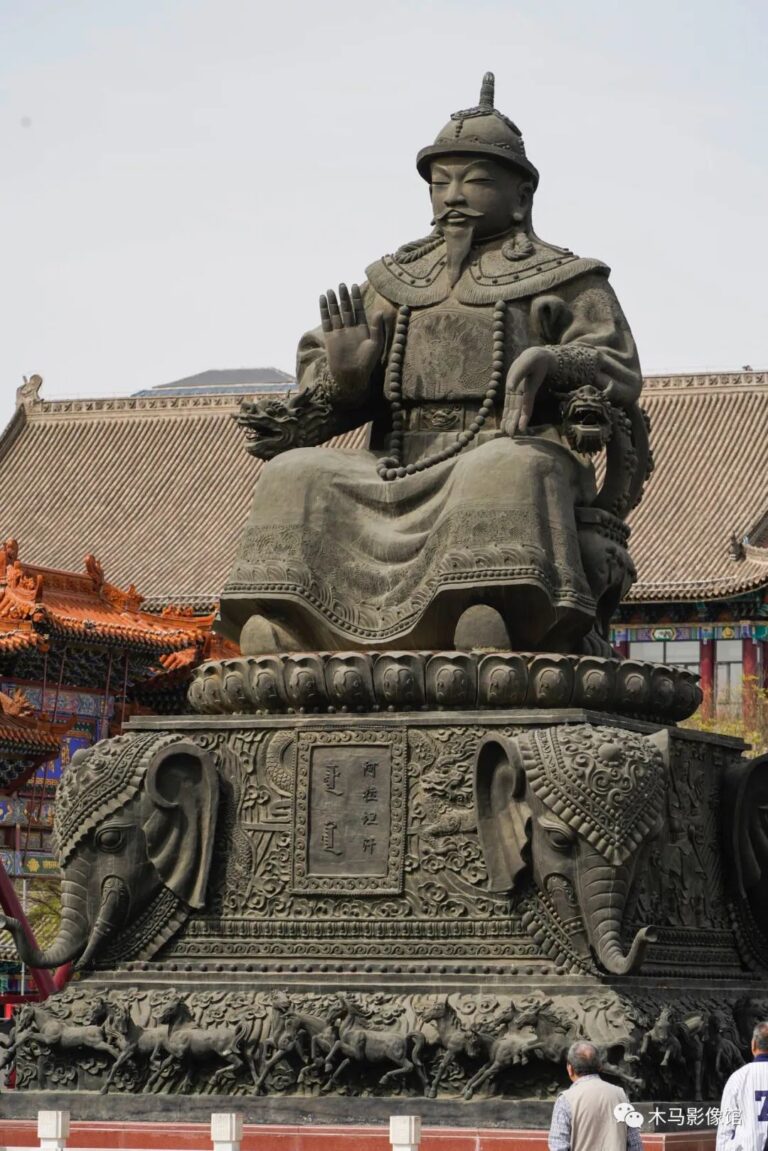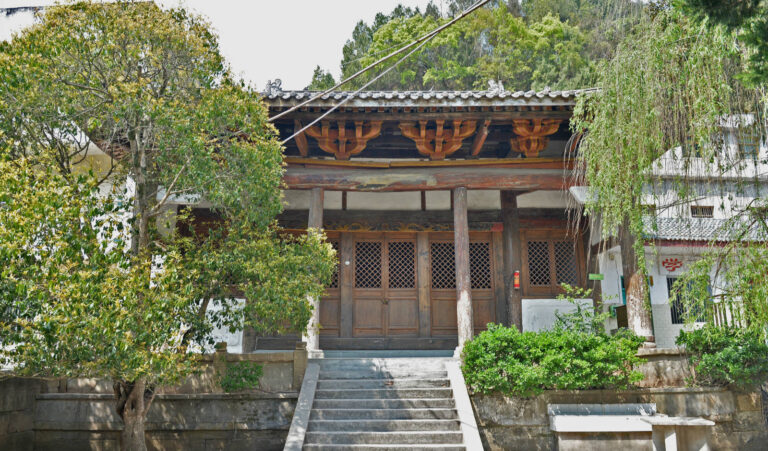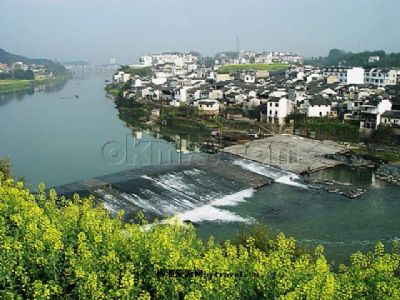Top Reasons to Visit Harbin’s Qinghua Gushanzhai Yizhi This Year
An Essential Guide to Visiting Harbin Qinghua Gushanzhai Yizhi
In This Guide
- An Essential Guide to Visiting Harbin Qinghua Gushanzhai Yizhi
- The Rich History of Harbin Qinghua Gushanzhai Yizhi
- Main Highlights: What to See at Harbin Qinghua Gushanzhai Yizhi
- Planning Your Visit: A Practical Guide
- Tickets, Hours, and Booking
- How to Get There
- Local Cuisine and Accommodation
- Frequently Asked Questions
- Final Thoughts on Your Trip
Nestled in the scenic landscapes of Harbin, Heilongjiang Province, the Harbin Qinghua Gushanzhai Yizhi, or the Qinghua Ancient Mountain Village Ruins, beckons travelers with its rich tapestry of history and culture. This archaeological gem, a national key cultural relic protection unit, offers a glimpse into the ancient world of the Warring States to Han Dynasties, making it a significant site for both history enthusiasts and casual visitors alike.
Discovered in 2013, the site is located just a short distance from the charming village of Qinghua, where remnants of a bygone era lie in quiet repose. The ruins, which comprise an elliptical fortification with a perimeter of approximately 650 meters, once served as a royal stronghold of the ancient state of Tuo Li, a local polity known for its distinctive cloud-patterned pottery—an artifact that hints at the sophistication and artistry of the nobles who once dwelled here.
Excavations have revealed more than 300 artifacts, including pottery, bronze, and stone tools, which paint a vivid picture of life during a tumultuous period in Chinese history. The site not only showcases the architectural prowess of ancient civilizations but also tells the stories of the people who lived, thrived, and ultimately faded into history. The Qinghua Ancient Mountain Village Ruins invites you to explore the echoes of the past, enriching your travel experience with a profound connection to the cultural heritage of this remarkable region.

Harbin Qinghua Gushanzhai Yizhi.
The Rich History of Harbin Qinghua Gushanzhai Yizhi
The Harbin Qinghua Gushanzhai Yizhi, an ancient site located in the Bin County of Harbin, Heilongjiang Province, is a remarkable testament to China’s rich historical tapestry, dating back to the Warring States and Han Dynasties. Recognized as a national key cultural relic protection unit in 2013, this archaeological site has unveiled significant insights into the life and culture of the ancient state of Tuo Li, a regional power believed to have been established by the northern Yi ethnic group.
The site’s oval structure spans approximately 650 meters in circumference and rests on the southern slope of a hill, about 200 meters north of Chengzi Village. Excavations conducted in 1985 revealed two residential buildings, as well as various storage pits, yielding over 300 artifacts primarily composed of pottery, along with bronze, bone, and stone items. Notably, the discovery of cloud-patterned pottery shards, typical of the aristocratic designs from the Shang to Han Dynasties, provides a vital connection to the societal structures and artistic expressions of that era.
Historical records mention the Tuo Li state as the first well-documented local regime in the Heilongjiang region, with its origins traceable to the pre-Western Zhou period. Scholars have pieced together narratives from texts such as Wang Chong’s “Lun Heng,” which recounts stories of the state’s royal lineage. One such tale involves a royal maid who, under mysterious circumstances, becomes pregnant and gives birth to a boy named Dongming, who later escapes from the king’s wrath to eventually establish the Fuyu state after integrating with indigenous tribes.

Harbin Qinghua Gushanzhai Yizhi.
The Qinghua Gushanzhai Yizhi stands as a vital archaeological landmark, illustrating the complexity of early Chinese civilization and its ethnic diversities. Its recognition as a nationally protected site underscores its importance in understanding the socio-political dynamics of ancient China, as well as its cultural and artistic heritage. Visitors to this site today can appreciate not only the remnants of ancient architecture and artifacts but also the stories of a vibrant past that shaped the region’s history.
Main Highlights: What to See at Harbin Qinghua Gushanzhai Yizhi
The Harbin Qinghua Gushanzhai Site is a remarkable archaeological treasure that offers a glimpse into ancient Chinese history and culture, specifically from the Warring States to Han Dynasty periods. Located in the Bin County of Harbin, this historical site is recognized as a national key cultural relic protection unit, making it a must-visit for history enthusiasts.
1. Ancient Significance
The site is believed to be the remnants of the ancient kingdom of Tuoli, established by the northern ethnic group known as the Tuoli people. This area is significant for being one of the first documented local regimes in Northeast China, with references found in various historical texts, including those by the scholar Wang Chong. Visitors can explore the elliptical ruins, which stretch approximately 650 meters in circumference, revealing the architectural styles and living conditions of the time.
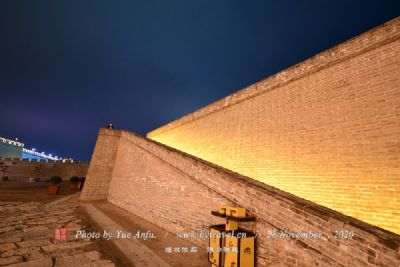
Harbin Qinghua Gushanzhai Yizhi.
2. Unique Artifacts
During excavations in 1985, archaeologists uncovered over 300 artifacts, predominantly pottery, alongside metal, bone, and stone tools. Notably, the discovery of rare cloud-patterned pottery shards provides insight into the artistic expressions of the nobility during that era. These artifacts are crucial for understanding the social and cultural dynamics of the time.
3. Recognized Cultural Heritage
In 2013, the Qinghua Gushanzhai Site was officially designated as a national key cultural relic protection unit by the State Council of China. This recognition highlights its importance in preserving China’s historical narrative, and ongoing research continues to shed light on the lives of its ancient inhabitants.
4. Scenic Surroundings
The site is situated in a picturesque location, offering visitors a chance to enjoy the natural beauty of the surrounding landscape. The nearby Erlong Lake National Wetland Park and various scenic areas such as Hualeshan and Xianglu Mountain provide additional opportunities for outdoor activities and relaxation, making it an ideal destination for both history buffs and nature lovers.
5. Educational Experience
Visiting Qinghua Gushanzhai is not just about exploring ruins; it’s an educational journey that delves into the complexities of ancient Chinese society. Guided tours often include narratives about the site’s historical context, providing a richer understanding of the artifacts and their significance.
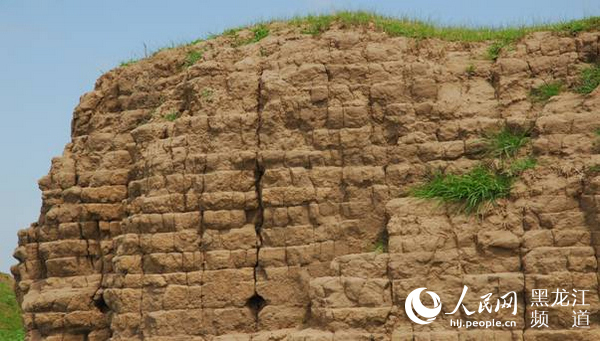
Harbin Qinghua Gushanzhai Yizhi.
In summary, the Harbin Qinghua Gushanzhai Site is a captivating destination that combines historical intrigue with natural beauty, making it a highlight for anyone traveling to the Harbin area. Whether you are an avid historian or simply looking to explore new cultural landscapes, this site promises an enriching experience.
Planning Your Visit: A Practical Guide
Practical Guide to Visiting Harbin Qinghua Gushanzhai Yizhi
Nestled in the scenic region of Bin County, Harbin, the Qinghua Gushanzhai Yizhi (Qinghua Ancient Mountain Village Ruins) is a remarkable archaeological site that offers a glimpse into China’s rich historical tapestry. If you’re planning a visit, this guide provides essential information to enhance your experience.
Getting There
Location: The site is located approximately 200 meters north of Chengzi Tun, in Qinghua Village, Bin County, Harbin, Heilongjiang Province.

Harbin Qinghua Gushanzhai Yizhi.
Transportation:
– By Car: If you’re driving, the site is accessible via major roads from Harbin. Expect a journey of about 60 kilometers, which should take around an hour.
– Public Transport: Local buses or taxis from Harbin to Bin County are available. Ensure you confirm schedules beforehand as they may vary.
Opening Hours
The Qinghua Gushanzhai Yizhi is generally open for visits year-round. However, it’s advisable to check the local tourism website or contact local tourist information centers for specific visiting hours and any potential holiday closures.
Admission Fees
As a nationally recognized key cultural relic protection unit, there may be an admission fee. The fee structure can vary, so inquire upon arrival or check online for the latest information.
What to See
-
Archaeological Ruins: Explore the remnants of structures from the Warring States to Han Dynasty periods. The site features an elliptical fortification wall with a perimeter of about 650 meters.
-
Cultural Artifacts: During past excavations, over 300 artifacts were unearthed, including rare cloud-patterned pottery pieces that illustrate the artistic styles of the era. These artifacts provide insight into the life and culture of the ancient inhabitants.
-
Interpretive Signage: Ensure to read the informative signs throughout the site that highlight the historical significance of the ruins and the ancient state of Tuoli, believed to be the first documented local power in Heilongjiang.
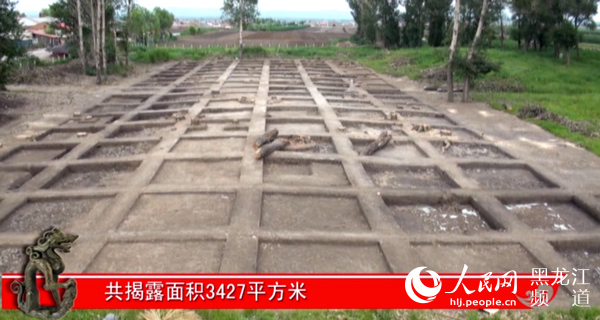
Harbin Qinghua Gushanzhai Yizhi.
Nearby Attractions
After your visit to Qinghua Gushanzhai Yizhi, consider exploring these nearby attractions:
- Er Long Lake National Wetland Park: A serene location perfect for nature walks and birdwatching.
- Longzhu Er Long Mountain Ski Resort: Ideal for winter sports enthusiasts, just a short drive away.
- Historical Sites: Visit the old site of the North Manchuria Bureau of the Chinese Communist Party, which is rich in regional history.
Tips for Visitors
- Dress Appropriately: Depending on the season, wear comfortable shoes suitable for walking and dress according to the weather, as outdoor exploration is a significant part of the experience.
- Stay Hydrated: Bring water, especially during the summer months, as exploring the ruins can be physically demanding.
- Photography: Capture the beauty of the site but be mindful of any restrictions regarding photography in certain areas.
- Guided Tours: Consider joining a guided tour for a more informative experience. Local guides can provide deeper insights into the site’s history and significance.
Conclusion
A visit to Harbin Qinghua Gushanzhai Yizhi is not just about exploring ancient ruins; it’s an immersive journey into the past of China. Prepare well, respect the site, and embrace the stories that unfold as you walk through this historical monument. Whether you are a history buff or simply looking for a unique experience, this site promises to leave a lasting impression.
Tickets, Hours, and Booking
Visiting Harbin Qinghua Gushanzhai Yizhi (Celebrating the Ancient Mountain Village Ruins) is a unique opportunity to delve into China’s rich history, particularly that of the ancient state of Tuo Li. As a national key cultural relic protection unit, this site offers an intriguing glimpse into the past, showcasing artifacts from the Warring States to the Han Dynasty.
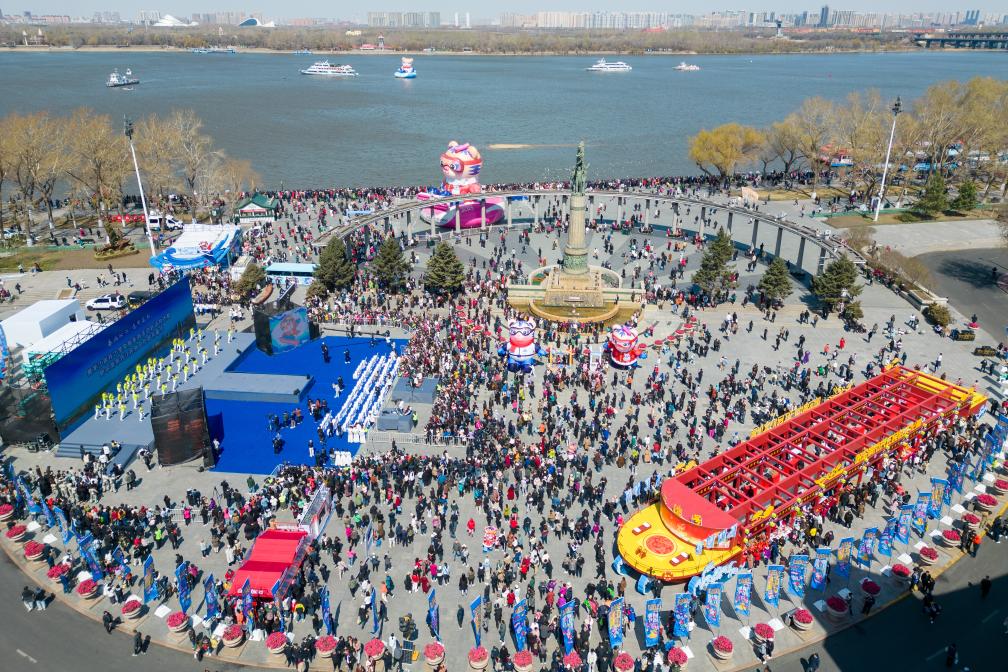
Harbin Qinghua Gushanzhai Yizhi.
Ticket Information
-
Admission Fee: Tickets are priced at ¥30 per person, offering access to the ruins and the surrounding historical area.
-
Opening Hours: The site is open daily from 8:00 AM to 5:00 PM. It’s advisable to arrive early to fully explore the expansive grounds and enjoy the various historical displays.
-
Location: The ruins are located approximately 200 meters north of Chengzitun, on the southern slope of Beigang, in Qinghua Village, Xinli Township, Bin County, Harbin.
-
Discounts: Reduced rates may be available for students, seniors, and groups. Be sure to check for any applicable discounts when purchasing your ticket.
-
Guided Tours: For a more informative experience, consider joining a guided tour. These are available for an additional fee, typically around ¥50, and provide deeper insights into the archaeological significance of the site.
-
Payment Options: Tickets can be purchased at the entrance, and both cash and mobile payment options are accepted, making it convenient for international visitors.
-
Transportation: Public transportation is available from the center of Harbin, with local buses providing access to Bin County. Alternatively, taxis and ride-sharing services can be used for direct access to the site.
Visiting the Harbin Qinghua Gushanzhai Yizhi not only enhances your understanding of ancient Chinese civilization but also provides a serene setting for reflection on the region’s historical significance.
How to Get There
Reaching the Harbin Qinghua Gushanzhai Yizhi, an ancient site of significant archaeological importance, is a straightforward journey with various transportation options available for both local and international travelers.
By Air
The nearest major airport is Harbin Taiping International Airport (HRB), located approximately 50 kilometers from the site. This airport serves both domestic and international flights, providing convenient access for travelers arriving from major cities in China and abroad. Once you land, you can opt for the following transport options:

Harbin Qinghua Gushanzhai Yizhi.
- Airport Shuttle Bus: Regular shuttle buses connect the airport to downtown Harbin. From there, you can transfer to a bus or hire a taxi to reach the site.
- Taxi Services: Taxis are readily available at the airport. A direct taxi ride to Qinghua Gushanzhai Yizhi will take around an hour, depending on traffic.
By Train
Harbin’s railway station offers high-speed and regular train services from various cities across China. Major routes include connections from Beijing, Shanghai, and Shenyang.
- Local Train to Bin County: Upon arriving at Harbin Railway Station, travelers can take a local train to Bin County. The journey typically takes about 45 minutes. From Bin County Railway Station, you will need to use local transportation options such as buses or taxis to reach Qinghua Gushanzhai Yizhi, which is about 15 kilometers away.
By Bus
For those preferring road travel, buses are a dependable option.

Harbin Qinghua Gushanzhai Yizhi.
- Long-Distance Buses: Tourists can take long-distance buses from Harbin to Bin County. Buses leave regularly throughout the day, and the ride lasts approximately one hour.
- Local Buses: After arriving in Bin County, you can find local buses that head towards the site. It’s advisable to check the schedules in advance, as local buses may have limited service.
By Car
Travelers who wish to explore the area at their own pace might consider renting a car.
- Car Rentals: Various car rental agencies operate in Harbin, allowing you the freedom to explore the scenic routes around the city and beyond. The drive to Qinghua Gushanzhai Yizhi from Harbin takes about an hour via the G10 expressway. Ensure you have a GPS or a reliable map for assistance.

Harbin Qinghua Gushanzhai Yizhi.
Local Transportation
Once you arrive in the vicinity of Qinghua Gushanzhai Yizhi, local taxis and ride-hailing apps such as Didi Chuxing are available for short distances. It’s advisable to have the location written in Chinese or to show it on a map to avoid any communication barriers.
Conclusion
Visiting Harbin’s Qinghua Gushanzhai Yizhi is made easy with multiple transportation options. Whether you arrive by air, train, or road, each mode of travel provides a unique way to experience the beautiful landscapes of Heilongjiang Province while connecting you to this ancient heritage site.
Local Cuisine and Accommodation
When visiting the historic site of Harbin Qinghua Gushanzhai Yizhi, travelers can indulge in a delightful culinary experience and find comfortable accommodations in the nearby area.
Dining Options
The region surrounding Qinghua Gushanzhai offers a variety of dining experiences that showcase local flavors and traditional cuisine. Here are some recommended eateries:
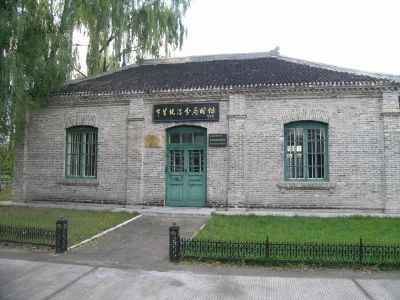
Harbin Qinghua Gushanzhai Yizhi.
-
Local Cuisine Restaurants: Enjoy authentic northeastern Chinese dishes, including hearty stews and dumplings. Look for establishments that specialize in Harbin-style dumplings, known for their unique fillings and cooking methods. A popular local dish to try is the Northeast-style pickled cabbage, which complements many meals.
-
Street Food Stalls: For a more casual dining experience, explore the street food scene. Vendors often sell grilled skewers, steamed buns, and sweet treats that are perfect for a quick snack. Don’t miss the chance to try Ice Sugar Hawthorn (tanghulu), a traditional sweet that is especially popular among locals.
-
Cafés and Tea Houses: If you’re looking for a place to relax after a day of exploration, consider visiting one of the local cafés or tea houses. These establishments often feature a cozy atmosphere where you can sip on traditional Chinese tea or enjoy a coffee while sampling light snacks or pastries.
Accommodation Choices
After a day spent exploring the ancient ruins, you’ll want a comfortable place to rest. Here are some accommodation options:
-
Hotels in Harbin: The city boasts a range of hotels from budget to luxury. Consider staying at a well-rated hotel in Harbin city center, which offers easy access to local attractions and transportation. Many hotels also provide services like guided tours to Qinghua Gushanzhai.
-
Guesthouses and B&Bs: For a more intimate experience, look for local guesthouses or bed-and-breakfasts. These often provide a homely atmosphere and personalized service. Staying at a guesthouse can also give you a chance to interact with locals and learn more about the culture.
-
Eco-Lodges Near the Site: If you prefer a nature-centric experience, consider eco-lodges located near the scenic spots around Qinghua Gushanzhai. These accommodations often emphasize sustainability and are surrounded by beautiful natural landscapes, perfect for those who wish to unwind in nature.

Harbin Qinghua Gushanzhai Yizhi.
Whether you are savoring local delicacies or resting in a cozy accommodation, your visit to Harbin Qinghua Gushanzhai Yizhi will be enhanced by these culinary and lodging experiences.
Frequently Asked Questions
-
What is the historical significance of the Harbin Qinghua Gushanzhai Yizhi?
The Harbin Qinghua Gushanzhai Yizhi, dating back to the Warring States to Han Dynasty periods, is a significant archaeological site recognized as a national key cultural heritage unit. It is believed to be the site of the ancient state of Tuoli, which holds substantial historical and cultural importance in understanding the early regional governance in northeastern China. -
Where is the Harbin Qinghua Gushanzhai Yizhi located?
The site is situated approximately 200 meters north of the city of Qinghua in Bin County, Harbin, Heilongjiang Province. It can be accessed easily from the main transportation routes leading to Harbin. -
What types of artifacts have been discovered at the site?
Excavations have revealed over 300 artifacts, primarily pottery, along with bronze, bone, and stone tools. Notably, rare cloud-patterned pottery shards have been found, which are indicative of the aristocratic culture during the period from the Shang to the Han Dynasties. -
Is there an entry fee to visit the Qinghua Gushanzhai Yizhi?
As of now, there is no information available regarding an entry fee for visiting the site. However, checking local resources or visitor centers for updated information before planning your visit is advisable. -
What are the opening hours for visiting the site?
Specific opening hours for the Harbin Qinghua Gushanzhai Yizhi have not been detailed. It is recommended to visit during daylight hours and to contact local tourism offices for the most accurate visiting times. -
Are there guided tours available at the Qinghua Gushanzhai Yizhi?
Guided tours may be available, but it is best to check with local tour operators or visitor centers in Harbin for more information about tour options, including any language assistance. -
What other attractions are near the Harbin Qinghua Gushanzhai Yizhi?
Nearby attractions include the Erlong Lake National Wetland Park, the former site of the Northern Manchurian Bureau of the Communist Party, and various scenic spots such as Hualeshan and Monkey Stone Mountain, making it a great area for a full day of exploration. -
What is the best time of year to visit the Harbin Qinghua Gushanzhai Yizhi?
The best time to visit is during spring and autumn when the weather is mild and pleasant, allowing for comfortable exploration. Winter can be quite cold, while summers may experience high humidity.
Final Thoughts on Your Trip
Visiting the Harbin Qinghua Gushanzhai Yizhi offers a unique opportunity to connect with a significant chapter of Chinese history, nestled within the stunning landscapes of Heilongjiang Province. This ancient site, a testament to the rich heritage of the region, invites travelers to explore the remnants of the Tongli Kingdom, where stories of nobility and ancient craftsmanship come alive through archaeological discoveries.
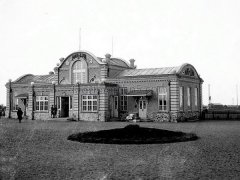
Harbin Qinghua Gushanzhai Yizhi.
As you walk through the elliptical ruins, imagine the lives of those who once inhabited this fortified settlement, their culture and traditions echoing through time. The discovery of exquisite cloud-patterned pottery serves as a reminder of the artistry and sophistication of the era, enhancing the allure of this historical gem.
Beyond its archaeological value, Qinghua Gushanzhai is a gateway to understanding the intricate tapestry of China’s past, showcasing the resilience and ingenuity of its early civilizations. Whether you are a history enthusiast or simply seeking a serene escape, this site promises an enriching experience that will linger in your memory long after you leave.
Embrace the spirit of exploration, and let the echoes of ancient voices guide you through the captivating story of Harbin’s Qinghua Gushanzhai Yizhi—where history, culture, and nature intertwine beautifully.
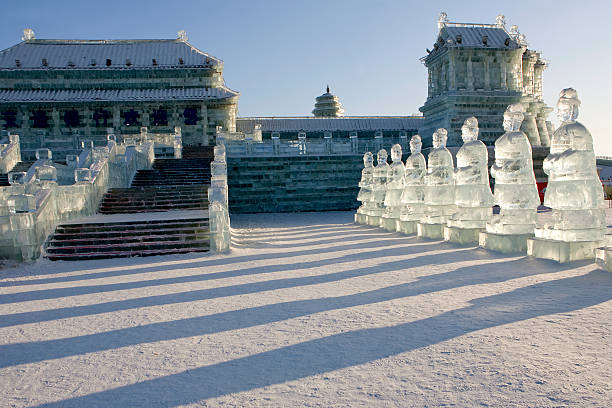
Harbin Qinghua Gushanzhai Yizhi.


